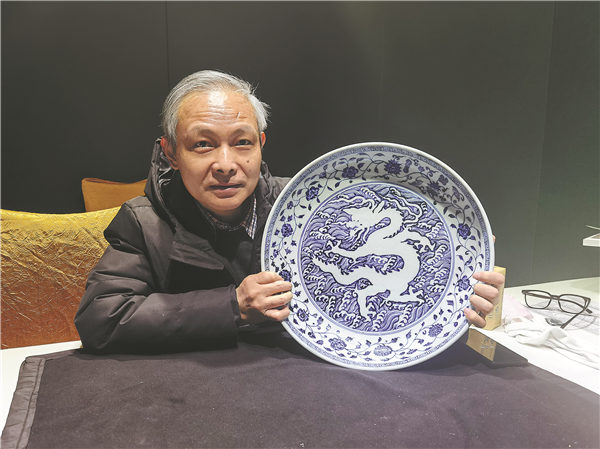Firing up traditional expertise
By Yang Feiyue | China Daily | Updated: 2024-05-16 07:35

"Although they are hard to control precisely, only traditional wood-fired kilns can process the porcelain in an extraordinary way that may go beyond your imagination," he says.
Gong also found that the formula for the clay went from using only porcelain stone, which can't withstand temperatures in excess of 1,200 C, during the Song Dynasty, to adding kaolinite during the Yuan Dynasty (1271-1368) to achieve a higher firing heat.
In 2008, Gong was entrusted by the Beijing Cultural Heritage Bureau with replicating a dozen Ming and Qing porcelain items.
Gong and his team studied vital clues from previous eras.
"Every tiny part might hide important information and can't be overlooked," he says.
He could even gauge the psychological state of the ancient craftsmen during the crafting process.
"The way they felt affected their breathing, which can have an effect on the stability of each line being painted," he explains.
In 2008, Gong donated the tools and traditional materials that he had gathered over the years to the Capital Museum in Beijing. More recently, he has been working to expand traditional porcelain craft to modern users, allowing visitors to be part of the process of the traditional porcelain firing in his ancient-style kilns in Jingdezhen. "They can draw patterns on the embryos and have them fired by professional craftsmen," Gong says.
Hu Kai-chun, a Taiwan resident now living in Beijing, was among the 40 people who experienced traditional porcelain making at Gong's place late last month.
"I've read about traditional porcelain making in books, and long wanted to see how it is done," says Hu, who studied East Asian art and who works as an interior designer.
He says he was impressed by the difference between the traditional and modern formulas for glaze, and the way workers placed the firewood in the kiln. "You can actually see the fire, and there were so many people working in tandem, controlling everything based on what they could see and hear," Hu adds.
For Gong, the modern electric and gas-powered kilns are signs of technical progress, and have a high firing success rate. "However, traditional ways should still have a place to create a balance and maintain diversity, cultural protection and inheritance," he says.
























